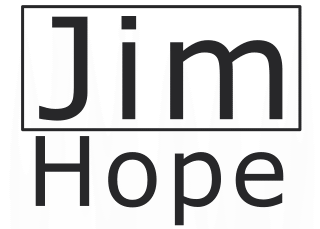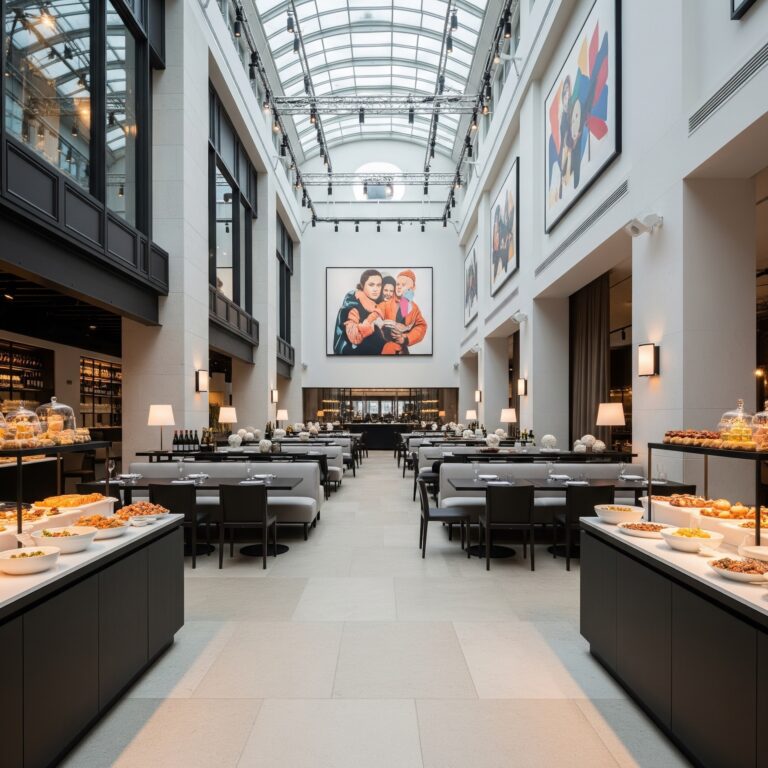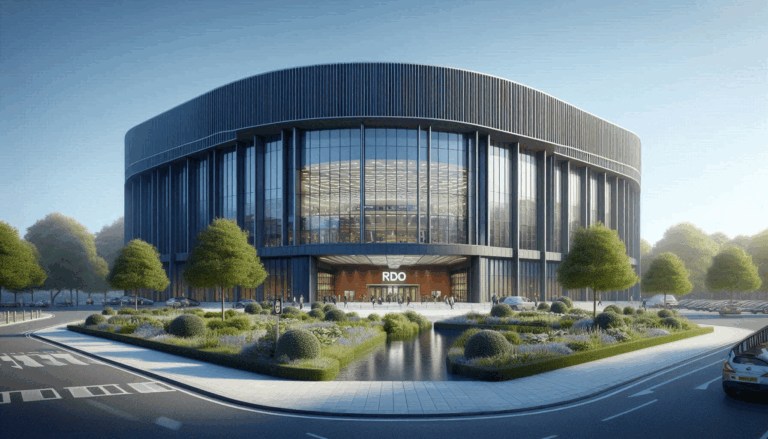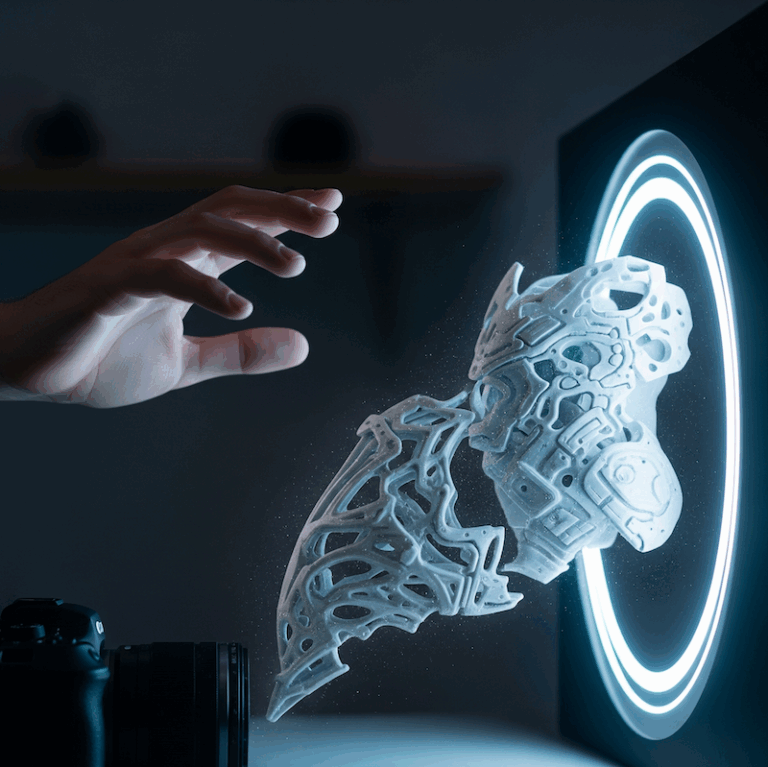The Command Nexus: CMH’s Tiered Control Room Architecture & Broadcast Mastery
Imagine a sprawling, bustling metropolis where creativity flows like electricity, and content is born at every turn. In this vibrant cityscape of innovation that is the Carnaby Media Hub, the various control rooms aren’t just mere offices; they are the nerve centers, the intricate traffic controllers, and the broadcasting beacons that ensure every single signal, every pixel, and every waveform reaches its destination, flawlessly and with unparalleled impact. They are the unseen heroes, the quiet powerhouses behind every dazzling live event and every seamless global broadcast.
Forget the simplistic notion of a single, monolithic “Central Control Room.” At CMH, we operate with a sophisticated, multi-layered ecosystem of control spaces, meticulously designed to handle the full spectrum of production needs – from intimate, venue-specific live shows to complex, multi-platform global broadcasts. This isn’t just about sending content out to the world; it’s about a deeply integrated network that provides precise local control within each venue, powerful dedicated hubs for major productions, and a watchful master oversight ensuring every aspect of quality and compliance. We understand that while a stage needs its own spotlight operator, a global concert needs a maestro with eyes and ears everywhere.
This tiered architecture is the very embodiment of CMH’s vision: a unique blend of local autonomy, allowing individual venues to manage their immediate environments with precision; immense collaborative power, enabling seamless integration of multiple creative streams; and boundless global reach, ensuring our productions meet the highest broadcast standards for any platform or device. It’s a testament to our commitment to engineering a workflow where the right control is always in the right hands, guaranteeing fluidity, resilience, and ultimate mastery over every single piece of content created and distributed from the Carnaby Media Hub. Welcome to the brain of the operation, multiplied and hyper-connected.
Local Command Posts: Venue-Specific Control Rooms – The Precision of the Pods
While the Carnaby Media Hub’s larger control rooms orchestrate grand symphonies of multi-venue productions and global broadcasts, the true grassroots command of each individual performance or recording session resides within the Venue-Specific Control Rooms. Think of these as the dedicated pods of precision – intimate, highly specialized environments built into each of our major creative spaces: the Sound Stages, the Radio Studios, and The Theatre. Their primary purpose is elegantly simple: to give the on-site production teams absolute, immediate mastery over everything happening within their specific venue, while simultaneously feeding their pristine content into the broader CMH network.
Stepping into one of these local command posts reveals a meticulous design philosophy focused on specialized expertise. Within each control room, the sound, light, and video control positions are thoughtfully separated, often in distinct, acoustically treated zones, or via custom ergonomic console designs. This isn’t merely for aesthetics; it’s to provide each operator with an unhindered focus on their discipline, minimizing distractions and maximizing precision. Imagine the sound engineer, deeply engrossed in fine-tuning a microphone mix, undisturbed by the video director calling camera shots, or the lighting director finessing a complex cue. Communication between these separated operators – and indeed, with the stage, green rooms, or even other venues across CMH – is handled by a sophisticated, matrix-based talkback system. This isn’t just shouting across a room; it’s an intelligent, customizable network that allows for seamless 1-to-1 conversations, grouped discussions with specific teams (e.g., director to all camera ops), or broadcast announcements across an entire venue or even the whole Hub. It’s the invisible thread of clear communication that keeps the delicate ballet of live production perfectly synchronized.
On the video side, these local control rooms are where every camera angle and visual element originating from that specific venue first gets its marching orders. While the operators are physically present in the venue’s dedicated control booth, the heavy-lifting hardware is smartly housed off-site in the central server room – a testament to CMH’s integrated design philosophy that prioritizes quiet operational spaces and centralized maintenance. Here’s how that meticulous video signal flow works: all raw camera feeds and other video sources within the venue are transmitted digitally using the powerful, low-latency ST 2110 IP protocol. These pure IP streams travel via high-speed fiber optic cabling back to the central server room. Upon arrival, they encounter multiple Blackmagic 2110 IP Converter 8x12G SFP converters. These incredible units diligently transform 8 of those pristine 2110 IP feeds into 8 individual 12G-SDI feeds. These SDI signals then split: one path leads directly to dedicated HyperDeck Extreme 4K HDR units, which meticulously record every single feed, guaranteeing full ISO recording for every camera and source in the entire CMH ecosystem to our Blackmagic Cloud Stores. This means absolutely unparalleled flexibility in post-production, as every isolated shot is captured and instantly available. Simultaneously, the other path from the converters feeds into a powerful Blackmagic ATEM 4 M/E Constellation 4K Plus switcher – a beast of a live production switcher dedicated to that specific venue, ready for the local team to perform their vision mixing magic.
Mirroring this meticulous approach on the audio side, sound from each venue is captured and networked with equal precision using Dante, the ubiquitous professional audio networking protocol. All microphones, instruments, and audio playback devices within the venue are connected to a Dante network, allowing their digital audio streams to be routed anywhere. For archiving and broader network access, these Dante streams need to be recorded to our central network storage. Our system leverages either Dante-enabled ADAT units (if we can find appropriate hardware that writes directly to network storage) or, for maximum flexibility and cost-effectiveness, multiple Mac Minis, each running Dante Virtual Soundcard software. These Mac Minis effectively become intelligent gateways, receiving the Dante audio streams and writing them directly to the network storage. This ensures that every individual audio channel, just like every video feed, is fully recorded and instantly accessible across the entire CMH network for mixing, post-production, or use by other venues.
A crucial distinction in these local command posts lies in the audio and video presentation for the in-house audience versus a potential broadcast feed. The audio mix heard within the venue is meticulously crafted to suit its unique acoustic properties – optimizing for the specific PA system, the room’s reverb, and the live audience experience. Similarly, local video displays might show specific angles or content tailored for the in-house viewer. This localized optimization allows for the best possible live experience for those physically present. However, as these feeds are passed up to the main broadcast control rooms, they are then re-mixed and processed to meet the stringent international loudness standards (like LUFS) and technical specifications required for external broadcast, ensuring compatibility across myriad devices and platforms.
In essence, these Venue-Specific Control Rooms are the highly specialized, perfectly tuned gateways of content creation. They are where the initial spark of a live performance or recording session is precisely captured, locally managed, and then seamlessly injected into the broader circulatory system of the Carnaby Media Hub, ready for distribution to the world, or indeed, to any other screen within our vibrant media city.
The Orchestration Hubs: Multi-Venue & Dedicated Broadcast Control Rooms – The Grand Conductors
While our Venue-Specific Control Rooms provide exquisite local command, the true magic of large-scale, simultaneous, or multi-venue productions within the Carnaby Media Hub unfolds in our Orchestration Hubs. These are our dedicated, full-feature broadcast control rooms – not one, but typically two or three such expansive spaces, designed for the immense demands of professional broadcasting. These are the realms where the individual performances from our Sound Stages, the compelling discussions from our Radio Studios, and the captivating spectacles from The Theatre are woven together into cohesive, seamless, and globally-ready programming.
The core purpose of these Orchestration Hubs is dual-edged. Firstly, they are built to handle simultaneous, independent broadcasts. Imagine the scenario: a high-energy rock concert is streaming live from the Theatre to a major online platform, while at the very same moment, a separate, insightful political debate is broadcasting from a Radio Studio to a national news channel. Each production requires its own dedicated team, its own mix, and its own output stream – and these hubs are designed to manage that intense, concurrent workflow without a single signal crossing or a single frame dropped. Secondly, and perhaps even more impressively, these are the primary hubs for complex multi-venue productions. This is where true cross-Hub synergy shines; think of a live television special that seamlessly blends a dramatic performance from the Theatre’s main stage with intimate backstage interviews conducted on a Sound Stage, intercut with live audience reactions from another part of the facility. These control rooms are where those intricate, layered productions are flawlessly integrated and sent out as a single, polished broadcast.
Stepping into an Orchestration Hub immediately conveys a sense of controlled power. These rooms are significantly larger than the venue-specific pods, accommodating a more expansive crew and more sophisticated equipment. Just like in our local control rooms, however, the principle of specialized focus is paramount: the sound, light, and video control areas are distinctly separated, often within a large, open-plan space but clearly delineated by custom consoles and monitor arrays, or even by low partitions for optimal concentration. Each discipline has its dedicated zone, equipped with highly specialized tools for their respective crafts. This physical and operational separation, however, is unified by our pervasive, matrix-based talkback system, ensuring that the Director can communicate precisely with the Vision Mixer, who can instantly confer with the Graphics Operator, while the Audio Engineer maintains a direct line to the talent – all without a cacophony of cross-talk. It’s like a high-speed telepathic network, making complex real-time collaboration not just possible, but effortlessly fluid.
The equipment housed within these Orchestration Hubs represents the pinnacle of broadcast technology. Each of these larger control rooms is typically equipped with its own Blackmagic ATEM 4 M/E Constellation 4K Plus switcher. While the venue-specific ATEMs handle local switching, these are the heavy lifters that pull in feeds from across the entire CMH network (including the pristine ISO feeds delivered via the 2110 IP converters and HyperDecks from the local command posts) to create the final program output. These sophisticated switchers allow for multi-layered effects, advanced chroma keying, and precise transitions across numerous camera inputs, ensuring a visually stunning and dynamic live show. Complementing the video prowess are equally advanced audio consoles – full-scale digital mixing desks designed for complex broadcast environments (such as those from Calrec, Lawo, or high-end models from DiGiCo/Yamaha). These consoles manage hundreds of audio channels simultaneously, from live microphones and music to pre-recorded segments and sound effects, all while applying real-time dynamics, equalization, and effects. Crucially, it’s in these rooms that the audio is meticulously mixed and processed to rigorously adhere to international broadcast loudness standards (like LUFS). This is a critical distinction from the in-house venue mixes (which are tailored to the specific acoustics of a room); here, the aim is universal compatibility and optimal playback quality across diverse viewing platforms and devices, from a cinema to a smartphone.
The crew in these Orchestration Hubs reflects the increased complexity of their mission. These are larger, multi-disciplinary teams, each member a specialist:
- The Director guides the entire creative flow.
- The Vision Mixer/TD executes every visual transition with split-second precision.
- The Audio Engineer crafts the perfect sonic balance for broadcast.
- The Graphics Operator provides dynamic on-screen information.
- The Replay Operator ensures every highlight is instantly available.
- And often, additional technical directors, producers, and even dedicated lighting controllers for broadcast specific lighting needs.
It’s a tightly choreographed performance where every individual plays a vital role, operating under intense pressure, yet empowered by world-class technology and seamless communication. These Orchestration Hubs are truly the places where CMH’s capabilities for live, high-stakes, multi-faceted broadcasting are fully unleashed, turning complex logistics into captivating content for the world stage.
The Unblinking Eye: The Master Control Room (MCR) – The Grand Traffic Controller
Having explored the individual command posts within each venue and the dynamic orchestration hubs for large-scale productions, we now arrive at the pinnacle of CMH’s control architecture: the Master Control Room (MCR). This is not a mixing room. This is not where the creative cuts are made or the intricate audio levels are balanced for a live show. Instead, the MCR is the ultimate overarching command center, the silent guardian, and the grand traffic controller for the entire Hub’s output. Its purpose is singular and paramount: to ensure that every pixel, every sound bite, and every piece of data leaving the Carnaby Media Hub, or being distributed within it, is precisely where it needs to be, utterly flawless, and compliant with every imaginable broadcast standard.
Imagine a room that operates with the calm precision of air traffic control for digital content. That’s the MCR. Its primary function is the relentless monitoring of all broadcasts. From its vantage point, a highly specialized technical operations team continuously watches every single outgoing broadcast originating from the larger Orchestration Hubs. This isn’t just a casual glance; it’s an eagle-eyed vigil for quality control, technical integrity, and crucial compliance. They are the final gatekeepers, ensuring that loudness levels adhere to international standards, that content meets regulatory requirements (such as censorship guidelines), and that there are no technical glitches – no dropped frames, no audio pops, no color shifts – before the signal hits the airwaves or streaming platforms. They are the unblinking eye, catching even the most minute imperfection before it can impact the audience.
Beyond its role as a supervisory hub for outgoing content, the MCR also serves as the indispensable ingest and distribution hub for all raw and processed feeds circulating within the CMH ecosystem. Every pristine ISO video recording from our HyperDecks, every multi-track audio capture from our Dante networks, every finished program output from the Orchestration Hubs – it all flows into the MCR. This makes it the central point for archiving, ensuring that every piece of content ever created at CMH is meticulously cataloged and stored. But it’s also the central brain for routing and traffic control. Need to send a live feed from Sound Stage 1 to a monitor in the Radio Studio for a joint rehearsal? The MCR manages that. Need to deliver a finished commercial spot to a specific broadcast network across town, or simulcast a live event to three different global streaming platforms? The MCR orchestrates that complex delivery. It’s the ultimate digital switchboard, directing content precisely where it needs to go, internally or externally.
The MCR team is also responsible for meticulous scheduling and quality assurance. They manage the complex broadcast schedules, ensuring that programs go to air precisely on time and that all pre-recorded elements are correctly cued and play out flawlessly. Should an issue arise – a technical anomaly, a sudden interruption to a feed – it’s this team that rapidly identifies the problem, diagnoses its root cause, and initiates the necessary actions for swift resolution, minimizing any disruption to service. Their expertise is crucial for guaranteeing that all content, whether live or pre-recorded, meets the highest final delivery specifications required by broadcasters and streaming services worldwide.
The crew in the Master Control Room comprises highly specialized technical operations teams. These are the unsung heroes of seamless delivery, engineers and technicians whose focus is entirely on global oversight, compliance, and the intricate management of CMH’s core infrastructure. Their world is one of detailed technical readouts, intricate routing matrices, and the constant vigilance required to safeguard broadcast integrity. And naturally, they are deeply integrated into CMH’s pervasive matrix-based talkback system, allowing them to communicate instantly and precisely with any local control room, any Orchestration Hub, or any technical team member across the entire facility. This ensures that their oversight is active and responsive, not just passive monitoring, solidifying the MCR’s role as the truly indispensable beating heart and all-seeing eye of the Carnaby Media Hub.
The Interconnected Fabric: Seamless Network & Universal Access – The Digital Nexus
Having explored the individual brilliance of our venue-specific command posts, the multi-faceted power of our orchestration hubs, and the unblinking vigilance of the Master Control Room, it becomes clear that none of this would be possible without the omnipresent digital infrastructure that binds them all together. This is our Interconnected Fabric, the logical extension of the high-speed, fiber optic backbone we’ve previously highlighted as the very foundation of the Carnaby Media Hub. It’s the seamless, unseen web over which every pixel and every sound wave travels, ensuring that content is always precisely where it needs to be, exactly when it’s needed, across our entire facility.
This robust network, leveraging advanced protocols like ST 2110 IP for video and Dante for audio, creates a unified ecosystem where every source and every destination are in constant, effortless communication. The most profound benefit of this digital tapestry is the principle of universal feed access. Every single live video feed from a camera on a Sound Stage, every microphone input from a Radio Studio, every program output from the Theatre – once it enters our network, it becomes immediately available. This means that any authorized control room, be it a local venue pod, a dedicated broadcast hub, or the Master Control Room, can instantly pull up any feed. An editor in a post-production suite can access a raw ISO camera feed from a shoot currently underway. A production manager in their office can monitor the live feed from a multi-venue broadcast. This unparalleled accessibility eliminates delays, eradicates the need for cumbersome physical media transfers, and fosters an environment where creative and technical teams are always working with the most current and comprehensive content.
This pervasive connectivity underpins the unparalleled operational flexibility that defines CMH. Our local venues aren’t isolated islands; they are fully connected outposts. The teams in venue-specific control rooms, while focused on their immediate production, can effortlessly access and route feeds from other venues onto their local displays, facilitating integrated rehearsals or providing contextual monitoring. Meanwhile, the dedicated broadcast control rooms (our Orchestration Hubs) are empowered to handle anything from a focused, single-venue live stream to an incredibly complex, multi-venue television special, seamlessly integrating disparate feeds with absolute confidence. And overseeing it all, the Master Control Room harnesses this universal access for comprehensive monitoring, global distribution, and ultimate quality control. The entire system is engineered for adaptability, allowing CMH to pivot from a small, internal recording to a major global broadcast with remarkable agility.
Crucially, for all this intricate coordination to function flawlessly, crystal-clear human communication is paramount. This is where our sophisticated, matrix-based talkback system becomes the ultimate conductor’s baton, weaving through every tier of control and every corner of every venue. Integrating professional intercom solutions (such as those from Clear-Com or Riedel), this robust platform ensures that every single operator, director, technician, and even stage talent can communicate instantly and precisely. Whether it’s a confidential 1-to-1 conversation, a grouped discussion with specific teams, or a broadcast announcement across an entire venue or even the whole Hub, the talkback system manages the flow of vital information without crosstalk or confusion. It’s the silent, constant dialogue that ties all the specialized functions together, enabling the synchronized ballet of live production to unfold flawlessly, every single time. This interconnected fabric is not just about the digital highways; it’s about empowering human collaboration at the speed of light, ensuring that every command and every cue is heard, understood, and executed with precision.
Global Distribution & Beyond: Getting CMH to the World – The Final Mile of Mastery
From the intricate choreography within our control rooms to the dazzling performances on our stages, every moment at the Carnaby Media Hub is engineered for impact. But the ultimate test of any media facility lies in its ability to deliver that meticulously crafted content to its intended audience, flawlessly and across every conceivable platform. This is the domain of Global Distribution, the final, critical mile where creative vision meets the vast, interconnected world.
To fully appreciate CMH’s capabilities, let’s briefly unpack the main pathways content takes to reach you:
First, there’s Traditional Radio Broadcasting, still a powerful and beloved medium. When you tune into an FM station, you’re listening to audio transmitted via “frequency modulation” – essentially, sound waves riding on a specific radio frequency, picked up by your antenna. DAB (Digital Audio Broadcasting), on the other hand, is a more modern approach, transmitting audio digitally as data packets, allowing for more stations on fewer frequencies and often better sound quality. Both rely on terrestrial transmitters broadcasting signals far and wide, picked up by your car radio or home stereo.
Then, we have the realm of Digital Television Broadcasting, often guided by the DVB (Digital Video Broadcasting)standards. Whether it’s DVB-T (Terrestrial, like your Freeview in the UK, transmitted from land-based towers to home antennas), DVB-S (Satellite, beamed up to satellites in orbit and then down to dishes on homes, covering vast geographical areas), or DVB-C (Cable, delivered directly to homes via fiber optic or coaxial cables), the principle is similar: digital video and audio are encoded, compressed, and multiplexed (combined into one stream) for efficient transmission. Increasingly, content is also moving via DVB-IP (IPTV), where television signals are transmitted over standard internet protocol networks, bringing TV much closer to the world of online streaming.
Finally, the ubiquitous force of Internet Streaming has revolutionized content delivery. Here, video and audio are encoded into a digital format, broken down into tiny chunks, and then delivered over the open internet. When you watch Netflix, YouTube, or Twitch, you’re experiencing streaming. A critical component of this is the Content Delivery Network (CDN), which consists of geographically distributed servers that store copies of content closer to users, ensuring faster loading times and smoother playback regardless of where you are in the world. Sophisticated techniques like adaptive bitrate streaming allow the quality of the video to automatically adjust based on your internet connection speed, preventing buffering and ensuring the best possible viewing experience.
Now, with that primer in mind, let’s see how the Carnaby Media Hub masterfully navigates this complex global landscape:
CMH is equipped to handle the entire spectrum of these distribution methods, ensuring our productions reach every screen and speaker, everywhere. This begins with rigorous encoding and transcoding. Our raw, high-resolution footage and audio from the MCR are meticulously converted and compressed into a myriad of formats and bitrates. A single live event might need to be simultaneously encoded for broadcast television, multiple streaming platforms (each with its own specifications), and even specific mobile applications. This crucial step guarantees compatibility and optimal quality across the dizzying array of devices and bandwidths used by audiences today.
For major broadcasters and direct point-to-point connections, CMH boasts robust uplink capabilities. This includes the potential for dedicated satellite uplinks, allowing for direct transmission of live content to global broadcast networks. Beyond satellite, secure, high-speed fiber optic lines provide direct digital links for dedicated feeds to specific partners or facilities, offering unparalleled reliability and bandwidth.
For reaching the vast global internet audience, CMH leverages the power of leading Content Delivery Networks (CDNs). By partnering with these global networks, our streaming content is cached on servers located strategically around the world. This means that whether your audience is in London, New York, Tokyo, or Sydney, they’re pulling the content from a server geographically close to them, resulting in minimal latency, reduced buffering, and a consistently high-quality streaming experience. This is vital for our webcasting and simulcasting capabilities, allowing us to simultaneously stream live events to multiple platforms – social media, dedicated websites, and various OTT (Over-The-Top) services – all at once, ensuring maximum reach and audience engagement.
Throughout this entire distribution chain, the ever-vigilant Master Control Room plays a final, crucial oversight role. While encoding and transmission are underway, the MCR team performs continuous quality control on the outgoingsignals. They monitor stream health, check for encoding artifacts, verify loudness compliance, and ensure that every byte of data destined for the world adheres to the highest technical and regulatory standards. This final layer of scrutiny ensures that when content bearing the CMH hallmark reaches its audience, it does so with unwavering excellence, truly cementing the Carnaby Media Hub’s reputation as a global leader in media production and distribution.
Orchestrating Excellence – The Unified Power of CMH’s Command Nexus
Our journey through the intricate world of the Carnaby Media Hub’s control room architecture has revealed a sophisticated ecosystem, meticulously designed for both unparalleled precision and boundless flexibility. We’ve seen how dedicated Local Command Posts empower individual venues with immediate, granular control over their productions, ensuring every performance is captured and managed flawlessly at its source. We then ascended to the Orchestration Hubs, the dynamic powerhouses where multiple creative streams converge, enabling both simultaneous, independent broadcasts and the seamless integration of complex, multi-venue spectacles. Finally, we surveyed the Master Control Room, the unblinking eye and central nervous system that provides overarching oversight, rigorous quality control, and the ultimate traffic management for all content flowing both within and out of CMH.
This tiered approach, underpinned by our robust, high-speed Interconnected Fabric of IP video and audio networks, is far more than just a collection of impressive rooms and cutting-edge equipment. It’s a strategic design philosophy that eliminates bottlenecks, fosters instant collaboration, and ensures universal access to every single feed across the facility. Whether it’s a specific camera angle from a Sound Stage, a pristine vocal track from a Radio Studio, or a polished program output ready for broadcast, the right content is always available at the right control point, precisely when needed. This seamless integration, bolstered by our sophisticated matrix-based talkback system, empowers every operator, director, and technician to work in perfect synchronicity, orchestrating events of any scale or complexity with absolute confidence.
The result is a media facility that offers unprecedented flexibility, remarkable scalability, and the unwavering promise of flawless delivery for any production scenario imaginable. The Carnaby Media Hub isn’t just equipped to handle the demands of today’s dynamic media landscape; it’s engineered to define the standards for tomorrow. From the subtle nuances of an in-house audio mix tailored to a specific venue, to the precise adherence to global broadcast loudness standards for external distribution, every detail is considered, every signal is managed, and every broadcast is perfected. This is where creative ambition meets technical mastery, ensuring that every story crafted within our walls resonates powerfully with audiences across any platform, anywhere in the world.
Considering this sophisticated, tiered control room setup – with local command posts, powerful orchestration hubs, and a vigilant Master Control Room all interconnected – what kind of truly complex, multi-venue live production do you think the Carnaby Media Hub would be uniquely positioned to pull off, and why? I’m eager to hear your most ambitious ideas!







